If you’re dreaming of a peaceful escape wrapped in soft sea breezes, incense-scented temples, and spiritual charm, Putuo Mountain (Mount Putuo) might be your ideal getaway. Nestled on an island in the East China Sea, off the coast of Zhoushan in Zhejiang Province, this gentle little mountain isn’t just a haven of scenic beauty—it’s also one of China’s Four Sacred Buddhist Mountains, known as the Bodhimanda of Guanyin Bodhisattva, the beloved Goddess of Mercy.
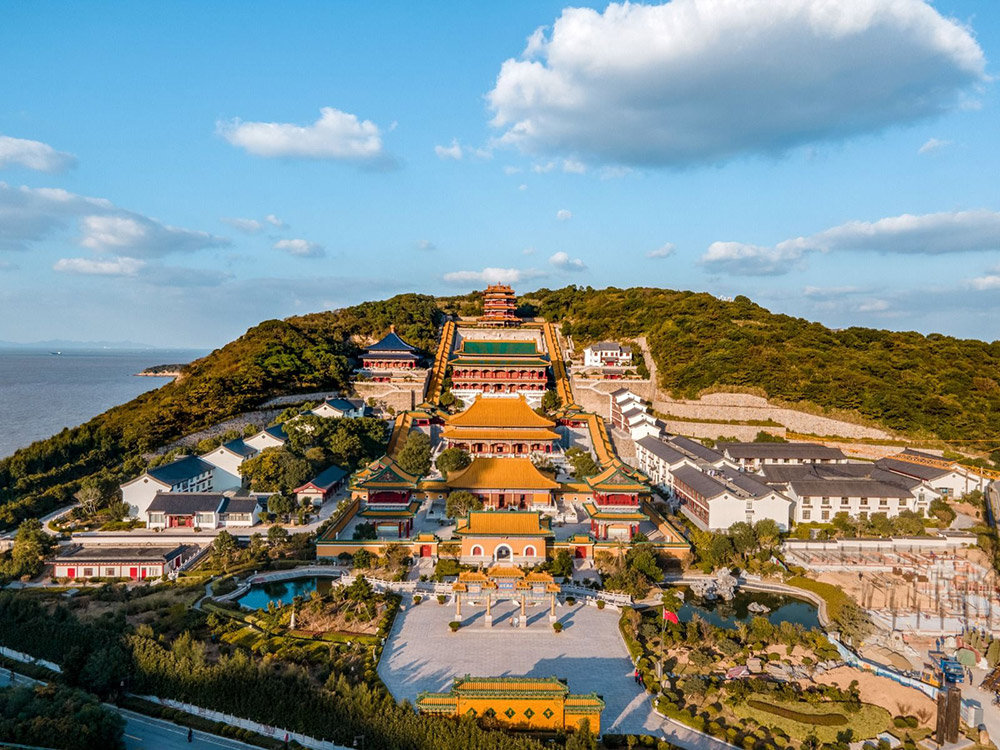
Putuo Mountain is more than just a travel destination. It’s a place where Chinese Buddhist culture hums quietly in the sea air, where monks chant as temple bells chime, and where Guanyin’s graceful figure seems to be hiding in every stone, wave, and cloud.
Let’s take a soft step through Putuo Mountain travel, exploring its spiritual landmarks, serene landscapes, and the surrounding coastal cities that make this journey both calm and colorful.
A Sacred Place: Where Guanyin Whispers to the World
Putuo Mountain is considered the place where Guanyin Bodhisattva preached and manifested—a fact that makes it one of the most important pilgrimage sites for Chinese Buddhism. Pilgrims believe that Guanyin once appeared here to spread compassion and guide sentient beings to salvation.
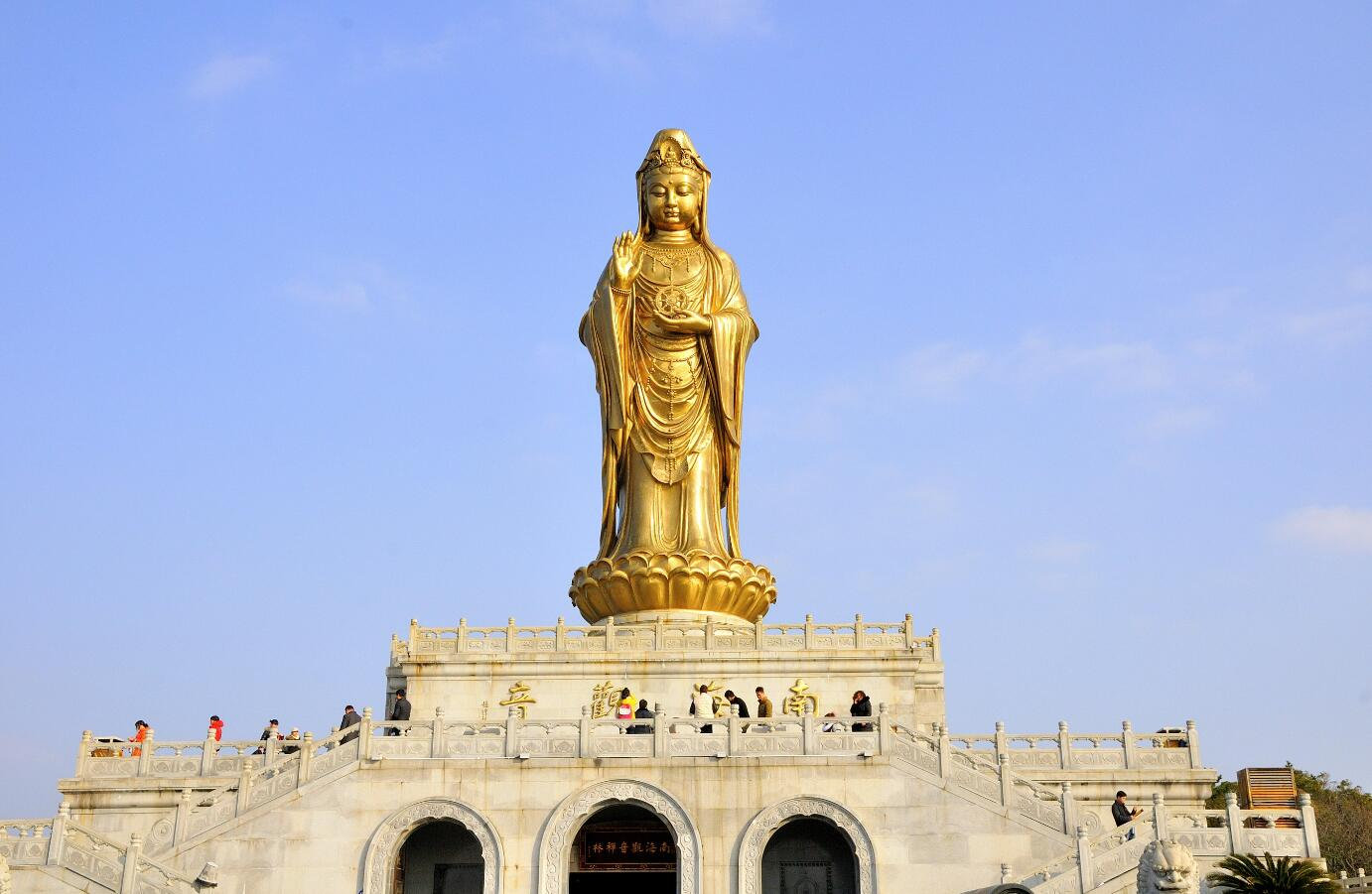
According to legend, centuries ago, a monk brought a statue of Guanyin from Mount Wutai to Putuo Island. When trying to leave, the statue refused to be moved—interpreted as a sign that Guanyin wished to remain. This story gave rise to the saying that Putuo is Guanyin’s permanent abode.
During major Buddhist festivals—especially Guanyin’s birthday (19th day of the second lunar month), enlightenment day, and ordination day—the mountain is filled with pilgrims lighting incense, chanting prayers, and offering lotus flowers. It’s not just a sacred spot; it’s an experience of stillness, grace, and devotion.
The Three Grand Temples of Putuo Mountain
Mount Putuo is home to three major temples, each with its own gentle rhythm, architecture, and spiritual significance.
Puji Temple
This is the main temple of Putuo Mountain, built in the Song Dynasty and constantly expanded over the centuries. With elegant archways and lotus ponds, Puji Temple is often the first stop for both tourists and pilgrims. Inside, you’ll find a large hall dedicated to Guanyin, with a solemn atmosphere and the soft scent of sandalwood.
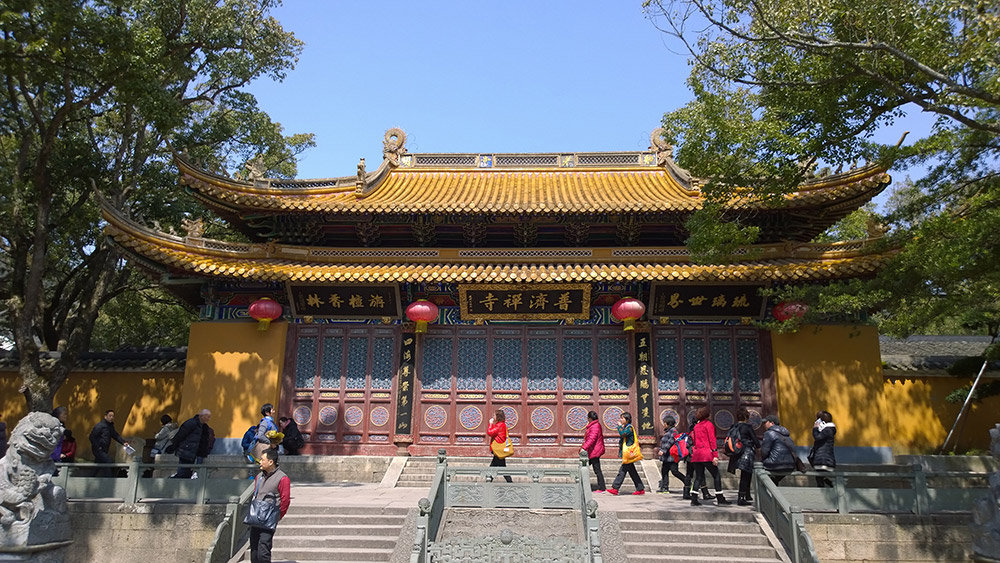
Fayu Temple
Climb a little higher and you’ll reach Fayu Temple, a place wrapped in pine trees and morning mist. Known for its ornate wooden structures, delicate carvings, and ancient stone pathways, Fayu Temple feels like a quiet secret. The temple’s Nine-Dragon Wall, a Ming Dynasty relic, is a highlight not to miss.
Huiji Temple
At the top of Mount Putuo stands Huiji Temple, also known as Buddha’s Summit Temple. This granite-built temple is the highest among the three and offers sweeping views of the ocean. After a peaceful hike or a cable car ride, you’ll be rewarded with cool breezes, sea birds, and an unforgettable panorama of Putuo’s natural charm.
The Natural Beauty of Mount Putuo
Mount Putuo isn’t just temples and incense; it’s also a place where nature sighs softly at every turn. With its rolling green hills, white sands, and deep blue sea, it’s no surprise that this mountain-island is considered both a holy site and a vacation spot.
- Hundred Step Beach and Thousand Step Beach offer calm shores for quiet walks or sandy naps.
- Chaoyin Cave is a famous sea cave said to echo the sounds of Guanyin’s chanting.
- Luojia Mountain, a smaller island nearby, is believed to be the actual place where Guanyin attained enlightenment. It can be reached by ferry on a clear day.
The blend of spiritual serenity and ocean views makes Putuo Mountain one of the most unique places in China’s coastal tourism.
The Guanyin Cultural Festival
One of the most anticipated events on Putuo Mountain is the Guanyin Cultural Festival, held annually to celebrate the rich traditions of Guanyin worship in China. The festival includes:
- Ceremonial rituals with monks and nuns from all over China.
- Lantern displays that light up the temples and beaches.
- Folk art performances, Buddhist music, and tea ceremonies.
Visitors can take part in sutra copying, incense-offering, and peaceful chanting ceremonies, while enjoying vegetarian food and local art. It’s a gentle, immersive way to learn about Buddhist customs and feel the slow heartbeat of Putuo Island.
Nearby Cities and Lovely Places to Visit
If you have a few more days in your travel basket, don’t miss the delightful surrounding areas. Putuo Mountain is part of the Zhoushan Archipelago, and nearby cities offer coastal beauty and cultural surprises.
Zhoushan City
Just a short ferry ride away, Zhoushan is a peaceful island city with colorful fishing villages and fresh seafood. Shenjiamen Fishing Port is known for its lively night market and seafood restaurants.
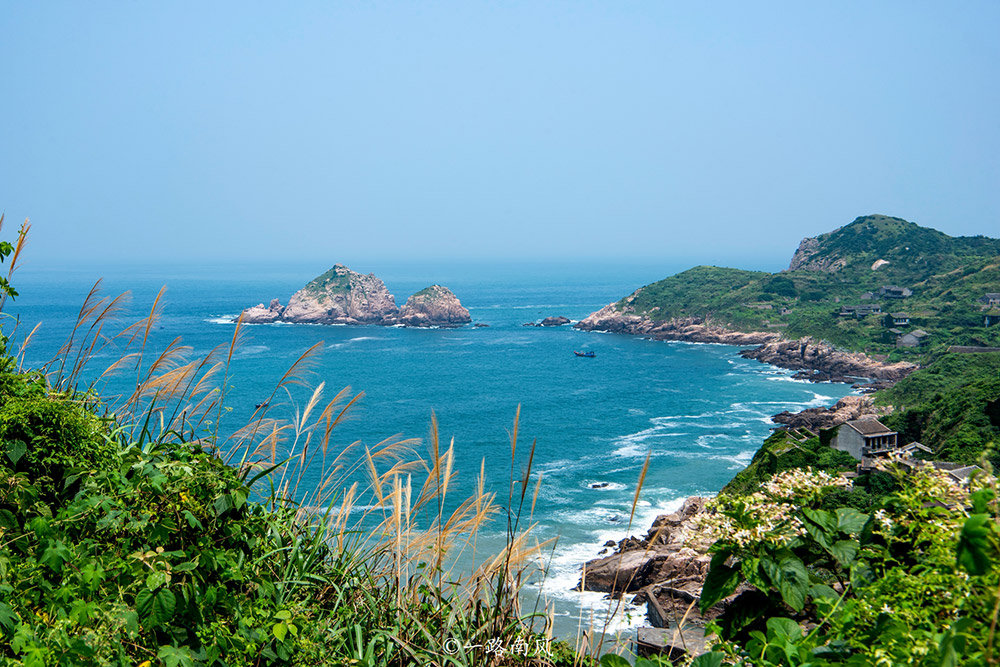
Dongji Island
Located further east, Dongji Island is a remote little cluster of islets surrounded by crystal-clear waters. Known as “the edge of China,” it’s perfect for quiet stargazing, lighthouse visits, and photography.
Ningbo
Ningbo, on the mainland, is about 3 hours away by car or ferry. It’s a historical port city with Tianyi Pavilion, one of the oldest libraries in Asia, and Baoguo Temple, a well-preserved wooden temple from the Northern Song Dynasty.
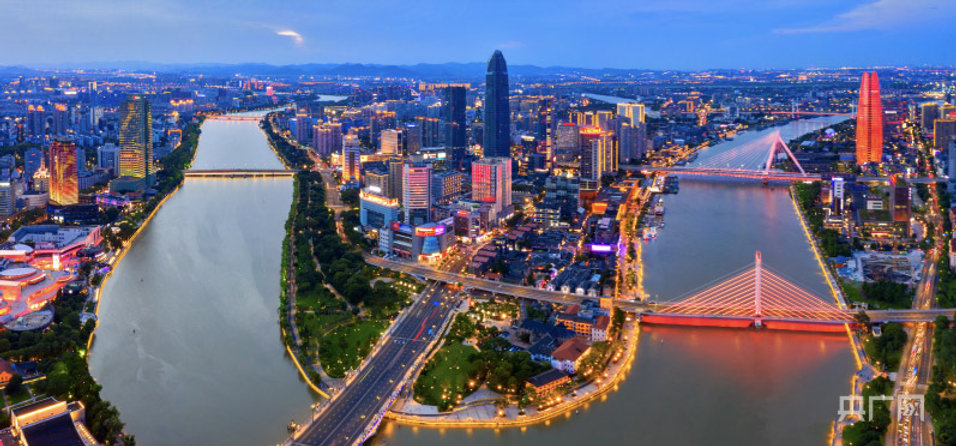
Shanghai
From Ningbo, it’s an easy journey to Shanghai, where modern skyscrapers meet historic temples. After the quiet charm of Putuo Mountain, a stroll along The Bund or a visit to Jade Buddha Temple gives your trip a vibrant, metropolitan finale.
Putuo Mountain tourism offers something beautifully balanced: a calm retreat for the soul, a journey through Guanyin culture, and an exploration of Chinese Buddhist sacred sites surrounded by the sea. Whether you’re seeking peace, inspiration, or a soft and scenic adventure, Putuo Mountain waits quietly across the waves.
For lovers of Buddhism, temple travel, spiritual destinations in China, or simply the poetry of mountains and sea, Putuo is a gentle place to start—or continue—your journey.
Contact us today to craft your dream China adventure!

